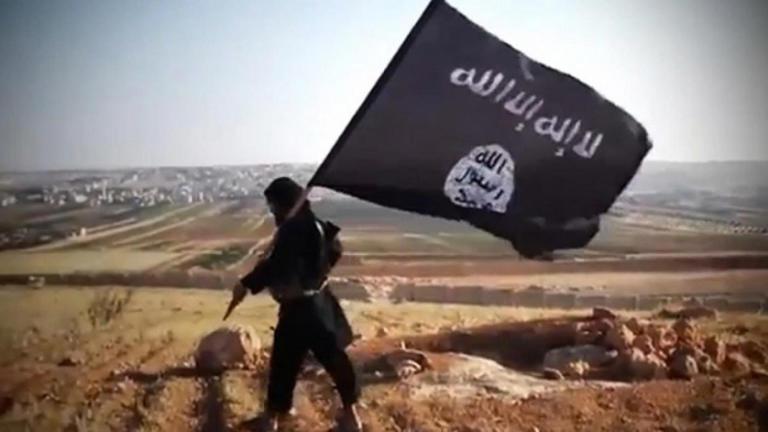
ISIS Is Still a Big Threat
Last week, The Global Coalition to Defeat Daesh/ISIS Africa Focus Group met in Niamey, Niger to discuss strategies aimed at minimizing the terror group’s grasp in the region. The joint counter-terrorism effort co-chaired by Italy, Morocco, Niger, and the U.S. focused on plans to “strengthen border security, collect biometrics of known and suspected terrorists, protect and utilize battlefield evidence, counter Daesh/ISIS propaganda and recruitment, and counter terrorist financing.”
ISIS’s Evolution Over Time
ISIS emerged as an off-shoot of al Qaeda in the early 2000s. By 2013, the group renamed itself the Islamic State of Iraq and the Levant as it tried to integrate al Qaeda’s Syrian affiliate, the al Nusra Front. Within a year, ISIS leader Abu Bakr al Baghdadi announced the formation of a worldwide caliphate, claiming political, religious and military authority over Muslims across the globe. At this point, ISIS and its affiliate members began launching attacks in Europe.
The international community rallied together under U.S. leadership to target the group. Dubbed Operation Inherent Resolve, the collective effort to take down ISIS involved ground troops, special forces, infantry, artillery, and air strikes.
Over the span of 12 months, the U.S. alone conducted more than 8,000 airstrikes targeting ISIS assets in Syria and Iraq. After suffering significant losses along the Syrian-Turkish border, Iraqi forces were able to recapture some territory. However, ISIS still controlled many strongholds.
After two grueling years, the ISIS caliphate had finally lost roughly 95% of its territory. Al Baghdadi was killed in 2019, cementing the terror group’s defeat in its mission to establish a global caliphate. At this point, an estimated 14,000 to 18,000 members remained, according to Reuters.
Some ISIS militants survived and escaped capture by hiding in mountainous terrain or within transient sleeper cells. While several particularly brutal ISIS-launched attacks in the Middle East have received extensive media coverage, terror activity in Africa is often ignored. Consequently, ISIS and its affiliates have gained a stronger foothold across the continent.
The Islamic State’s “New Frontier”
In recent weeks, ISIS has claimed responsibility for multiple attacks across Africa. On March 11, the terror group revealed that it was behind the killings of more than 35 people in eastern Congo. The group claimed it had killed Christians and destroyed their properties in North Kivu province, releasing an image of houses on fire.
In May, an ISIS-affiliated news agency published a video of militants executing a dozen Nigerian Christians. The U.S. State Department released its annual Country Report on Terrorism late February, which provides Congress with a complete yearly report covering terror-designated groups. The report mirrored earlier versions in its coverage of the dangers ISIS still poses.
“ISIS continued to promote a large-scale terrorism campaign, responding to increased counterterrorism pressure by adapting its tactics and techniques,” the report explains. “Groups affiliated with ISIS ramped up activities in the Lake Chad Region of Cameroon, Chad, Niger, and Nigeria.” Additionally, “AQ-related threats expanded from West Africa and the Sahel into the Gulf of Guinea littoral states in 2021, with Benin, Côte d’Ivoire, Ghana, and Togo reporting terrorist group activity and attacks in their northern border regions.” Sub-Saharan Africa is on track to account for more than half of global terrorism deaths in the world this year.
As jihadist violence continues to plague the Horn of Africa, the U.S. has launched a military training exercise designed to properly aid armies to fight terror groups. Known as Flintlock, the exercise gathers roughly 1,300 military personnel from 29 countries to train in Ghana and the Ivory Coast.
According to U.S. officials, the training exercise is meant to help African countries stanch the spread of the extremist threat.
However, a new approach might be needed, considering the breadth of the Islamic State’s expansion in the region.
While all eyes are on Russia’s ongoing invasion of Ukraine, the Horn of Africa is being systematically attacked and exploited by a terror organization that is no longer considered a priority in the West.
The Islamic State’s mission to achieve a worldwide caliphate has not been crushed, but rather repositioned from the Middle East to Africa. Without an effective strategy to counter a deeply entrenched terror group, ISIS is bound to continue gaining a foothold on the continent.
Source: msn





